This is an introductory session on the phonemic chart for trainees taking the DipTESOL. I’ve designed this to supplement input given via distance learning courses, to be run in-house. It’s meant to help trainees give a basic explanation of the phonemic chart – something I was asked to do during my DipTESOL phonology interview.
The first question I was asked in my DipTESOL phonology interview was (along the lines of…):
Can you give me a brief description of the phonemic chart, and how it might benefit learners of English?
Gulp. Where do I start?
If I were a DipTESOL tutor the first thing I would do is get the chart into play. I think the phonology part of the course is what many trainees fear, so let’s nip that in the bud straight away… This session isn’t about jumping straight in and learning all the sounds, sound symbols, place and manner of articulation and all that scary stuff. It’s about exploring the idea of the chart and helping trainees become more confident discussing it rather than using it.
Disclaimer: my flipcharts don’t look good 😦
Session time: about an hour
I encountered the phonemic chart on my CELTA course, so I’m guessing others will have too. I’d guess also that many teachers know more about it that than they think, so let’s start with a discussion:
Let’s add a bit more challenge… can trainees complete this sentences? After revealing the short answers, it might be worth discussing/showing an example of the International Phonetic Alphabet.
I would remind trainees to take notes at this stage, because they will need to remember this information… Here’s a bit more, true or false this time…
Again, a bit of discussion can follow on, but you don’t need to go into too much detail about the layout of the chart. No overkill at this stage!!!! Even some of the above terms might scare trainees off, so tread carefully…
Next up – here’s a confidence booster. Highlight how much trainees already know about the sounds/symbols themselves. They’ll hopefully realise that a lot of the symbols that represent consonant sounds are the same…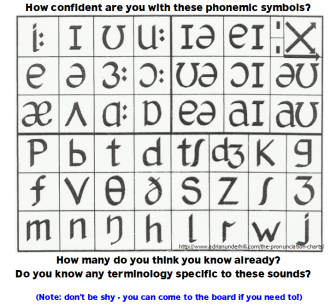
OPTIONAL TASTER:
If you think your trainees are more than comfortable at this stage then you could give them a taster of other things to learn about the chart… up to you…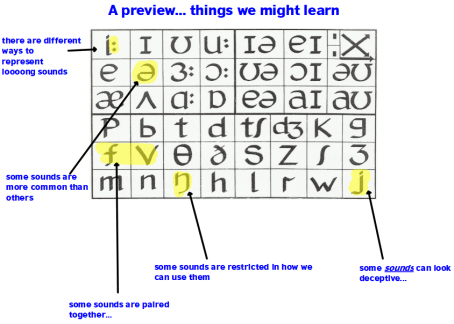
Anyway, that’s basically what the chart is. So how could it benefit the learners? Trainees can discuss that…
I found a good summary on this topic online – a snippet from ‘How to teach… phonemic script’ from OUP. Here it is. Trainees can see if they have similar ideas and we can discuss what else to add…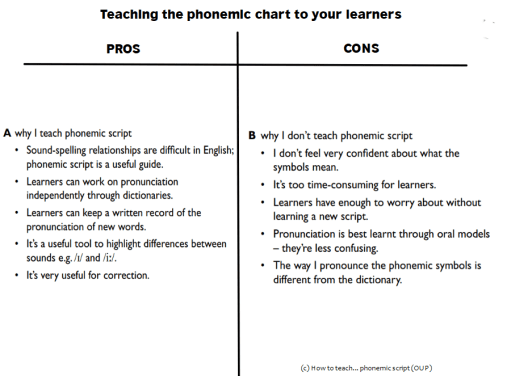
Such a discussion has been had many times before. This is a good time to mention the first ever #ELTchat and provide a link to the summary…
Link to the summary by Rachael Roberts
Ok… let’s stay DipTESOL related. It’s time to mention the phonology interview…
…and that first question again…
Point out that the trainees might not be asked the same question, but it’s worth preparing for it anyway! Trainees can practice answering this question mentioning some of the general information we’ve covered. Here’s a checklist I made for the activity…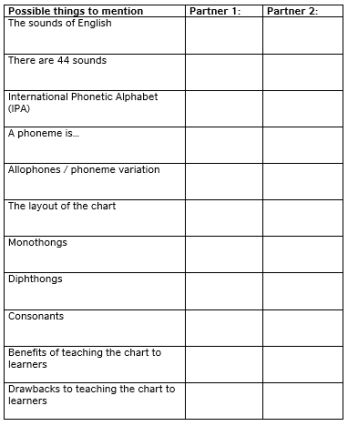
Make sure they have a copy of the chart in front of them while they are explaining it so they can point to different sections if they need to.
Whether or not their explanations are successful, this should give the trainees a few ideas for areas to research.
I’ve also included a few activities for further reading (see flip). The link below is one example.
https://www.teachingenglish.org.uk/article/using-phonemic-chart
Resources:
introduction to phonemic chart flipchart (Active Inspire)
Link to the ‘How to teach… phonemic script’ page
Describing the phonemic chart (checklist)
All images of the chart were taken from:
http://www.adrianunderhill.com/the-pronunciation-charts/
Categories: DipTESOL tips, General

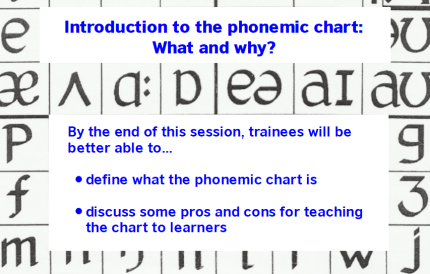

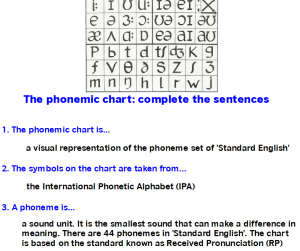
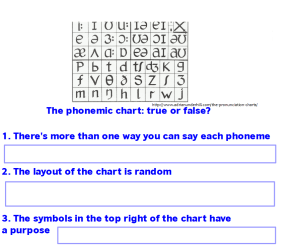
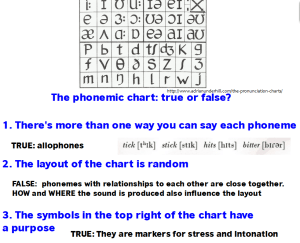


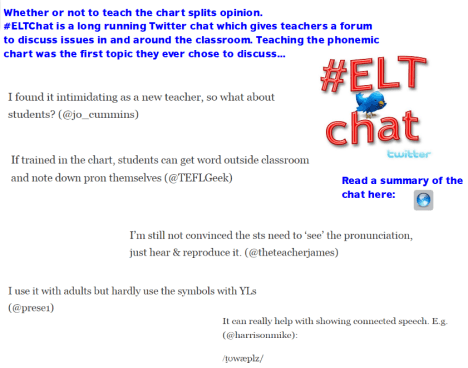


Hi!
Just to let you know that we’ve shortlisted this blog post for this month’s TeachingEnglish blog award and I’ll be putting up a post about it on today’s TeachingEnglish Facebook page http://www.facebook.com/TeachingEnglish.BritishCouncil, if you’d like to check there for comments.
Best,
Ann
LikeLike
Thanks Ann!
LikeLike